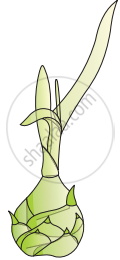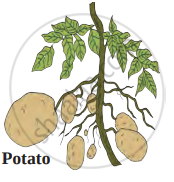Advertisements
Advertisements
प्रश्न
Distinguish mound layering and air layering.
उत्तर
- Mound Layering:
In mound layering, a lower flexible branch with leaves is bent to the ground and a part of the stem is buried in the soil and the tip of the branch is exposed above the soil. After the roots emerge from the buried stem, a cut is made in the parent plant so that the buried plant grows into a new plant. -
Air Layering:
In air layering, the stem is girdled at the nodal part and hormones are applied and covered with moist soil using a polythene sheet. Roots emerge in these branches after 2-4 months. Such branches are removed from the parent plant and grown separately.
संबंधित प्रश्न
Define vegetative propagation.
What is the modification seen in the Bryophyllum. Explain
List out two sub-aerial stem modifications with examples.
A detached leaf of Bryophyllum produces new plants. How?
Write short notes on approach grafting.
“Tissue culture is the best method for propagating rare and endangered plant species”- Discuss.
List down the advantages of conventional methods.
Explain the conventional methods adopted in the vegetative propagation of higher plants.
Enumerate the characteristic features of Entomophilous flowers.
Vegetative propagule in Agave is termed as ______
A plant is shown in the given diagram. Identify the plant with its vegetative mode of reproduction.

Observe the following figure and answer the questions below:


- Which process is shown in figure?
- Define the process.
- Give an example of the process depicted.
Which ability of plants like banana and bryophyllum is exploited by gardeners and farmers for their commercial propagation?
